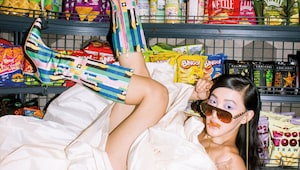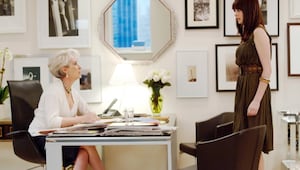The Psychology of Your stuff
Whether you’re a hoarder or a neat freak, your room says plenty about the real you. Find here, how to decode your most personal space!

Katha, 20, made friends with a girl at college who seemed pretty cool—she had fabulous clothes, a totally on-trend haircut, and a collection of bright folders she took to the lectures. “She seemed like a really fun, ‘with it’ girl,” says Katha. The bubble burst when she went to her new friend’s house and saw that her room looked like it belonged to an eight-year-old girl: soft toys piled on the bed, dolls and ornaments on every flat surface, a hot pink duvet with hearts, and pin-ups of teen pop stars on the walls. There wasn’t a single book or chic accessory in sight. Katha had a minor freak-out about her friend’s development level. “It just made me see her in a totally different light,” she says.
“Katha’s is a common experience,” says psychologist Sam Gosling, author of Snoop: What Your Stuff Says About You (snoopology.com), who’s been studying the relationship between personality and private space for more than a decade. “We think we have a good idea of what someone’s like, then when we see their place, we realise how wrong we were. Katha’s story shows how heavily we weigh what we make of other’s private space; by looking at someone’s place, you get an honest idea of what they’re like,” says Sam. There are three ways to decode someone’s living space according to Sam. The first is through identity claims—things we display deliberately to communicate our valuables and attitudes. “We put up pictures of our idols in our homes and offices and we want other people to see them, because they advertise our interests,” says Sam. “It’s publicly understood that the Rolling Stones were wild and Marilyn Monroe was glamorous—if a girl displays the famous photo of Marilyn standing over the air vent in her room, she’s showing others that she admires vivacious qualities in a woman. She’s also (possibly unconsciously) showing what kind of person she’d like to be, and how she’d like others to see her,” he adds.
The second set of decoders are called ‘feeling regulators’. These are possessions that affect how we feel. For instance, you may have an oil burner to encourage relaxation, or colourful lamps to create an upbeat ambience whenever you are feeling low. Photos are also feeling regulators. “They’re a social snack,” says Sam. “Just as we hunger for food, we can hunger for emotional fulfillment from time to time. You look at a photo and it gives you a little hit of what you’re longing for, which might be a boyfriend, a friend or a pet.” And the third set of decoders are called ‘behavioral residue’—things we do that leave a mark, like drinking coffee and leaving the mugs behind. Sam explains: “So I’m looking around at my office desk now and it’s a total chaos because I’m trying to tell the world I am chaotic (an identity claim), and it’s not in chaos because it makes me feel better (a feeling regulator). It’s just my personality—I don’t notice mess like a conscientious person would.”
more from Life

Which 2025 pop culture moment are you?

Eight cities, eight stories—check out where India’s matcha lovers get their fix

How to survive party season without burning out your body

Is luxury for Gen Z?

The only holiday watchlist you need if you’re not leaving the house

The ultimate gifting list that will make you everyone’s favourite Secret Santa

What does your texting pace say about you?

How to sit at the bar alone and actually meet people instead of just staring at your phone the whole time

Is 2025 the year when romcoms finally got emotional intelligence right?

Why logging off after work still feels like a myth in creative industries
